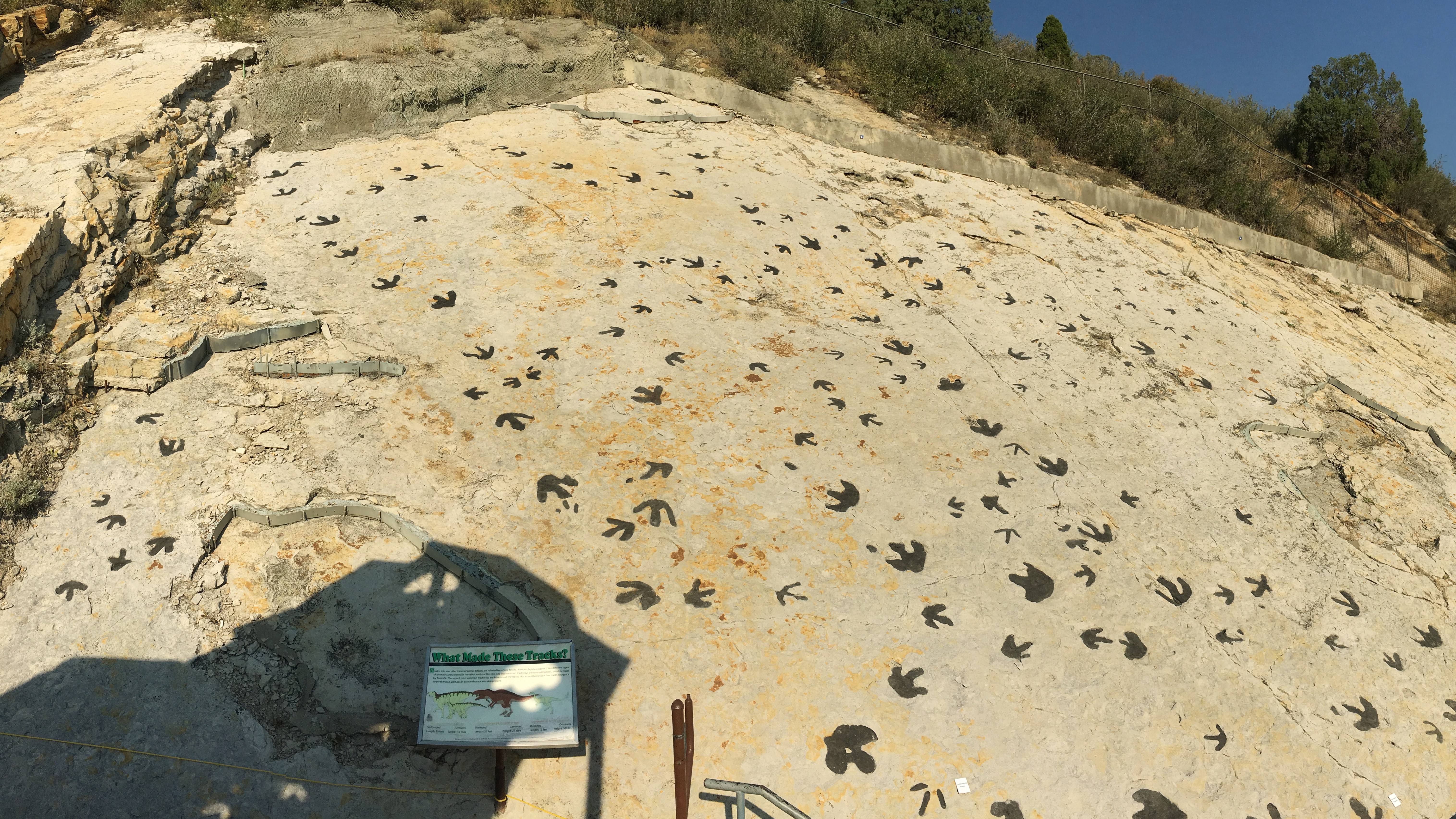T. rex relatives 'moonwalked' to attract mates, newfound dinosaur ‘mating arena' suggests
Researchers have identified a "mating arena" at Dinosaur Ridge where male theropods gathered during the Cretaceous period to display in front of females.

Around 100 million years ago, male dinosaurs entered a "mating arena" in Colorado and danced their hearts out to attract females, a new study suggests.
Researchers uncovered a series of mating display scrapes preserved on the surface of rocks at Dinosaur Ridge in Jefferson County, Colorado. The state is known for dinosaur track sites, with previous studies suggesting that dinosaurs returned to these mating spots over successive breeding seasons.
The latest marks identified at Dinosaur Ridge suggest that multiple individuals participated in mating display behavior there during the Cretaceous period (145 million to 66 million years ago) and allow the ridge to be classed as a "display arena," or lek, according to the new study, published online on June 4 in the journal Cretaceous Research.
The scapes were left by theropods, a group of bipedal dinosaurs that included Tyrannosaurus rex. Study lead author Caldwell Buntin, a lecturer in Earth science at Old Dominion University in Virginia, told Live Science that they don't have any direct evidence of what species left the marks, but it was a small therapod, around the size of a modern-day ostrich.
Researchers believe that the dinosaurs showed off to potential mates by jabbing their claws deep into the sand, dragging their feet and kicking up sand behind them. Buntin noted that the animals would alternate between their two feet when kicking up sand and had different moves.
"We can tell they had two moves so far, one walking backwards and one moving side to side," Buntin said in an email. "If they were really excited they would step a few feet backwards and repeat the motion, which usually erases the back half of each earlier set of scrapes. When this happened 3 or more times a few of these show a counter-clockwise turn, kind of like the moonwalk with a little spin."
Related: Mysterious 'runner' dinosaur a sign there are more Jurassic secrets to unlock beneath western US
Get the world’s most fascinating discoveries delivered straight to your inbox.
"When moving side-to-side, they would take a step or two to the side, face the same direction, and repeat their scrape movements," Buntin said. "This is usually recorded by two sets of scrapes right next to one another, or one and a half sets of scrapes if they only took a half step over."
Lekking is a common behavior among modern birds. For example, male greater sage-grouse (Centrocercus urophasianus) perform an elaborate sunrise display each spring, inflating air sacks on their chests and generally strutting their stuff for the attention of females.
The lek at Dinosaur Ridge dates back to the Cretaceous period's Cenomanian age (100.5 million to 93.9 million years ago). Buntin and his colleagues used drones to capture high-resolution images of the site and identified a total of 25 new scrapes on two surfaces at the ridge.
"It was very exciting to see the new scrapes in the imagery when we processed it!" Buntin said. "Originally only 2 or 3 of the new traces were immediately evident, but within an hour or so we had noticed almost a dozen new of the scrapes. It was quite surreal."

Patrick Pester is the trending news writer at Live Science. His work has appeared on other science websites, such as BBC Science Focus and Scientific American. Patrick retrained as a journalist after spending his early career working in zoos and wildlife conservation. He was awarded the Master's Excellence Scholarship to study at Cardiff University where he completed a master's degree in international journalism. He also has a second master's degree in biodiversity, evolution and conservation in action from Middlesex University London. When he isn't writing news, Patrick investigates the sale of human remains.
You must confirm your public display name before commenting
Please logout and then login again, you will then be prompted to enter your display name.


